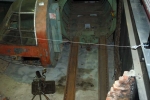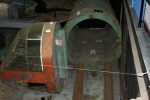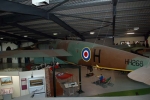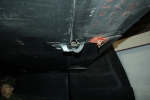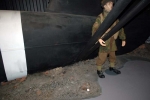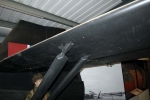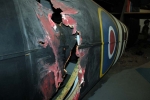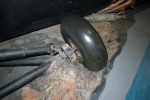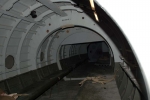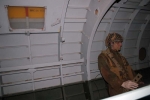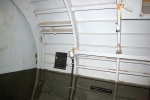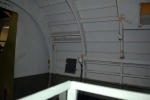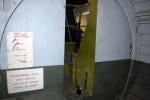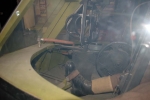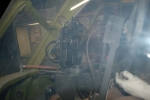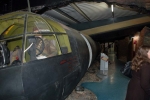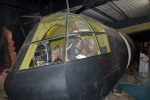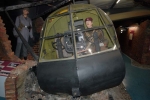Airspeed Horsa
...
Post a Comment
history
The Airspeed AS.51 Horsa was a British World War II troop-carrying glider built by Airspeed Limited and subcontractors and used for air assault by British and Allied armed forces. It was named after Horsa, the legendary 5th century conqueror of southern Britain.The Horsa, given the designation of AS 51, was produced to meet Specification X.26/40 issued on 12 October 1940. Initially it was planned that the Horsa would be used to transport paratroopers who would jump from doors installed on either side of the fuselage, and that the actual landing would be a secondary role; however the idea was soon dropped, and it was decided to simply have the glider land airborne troops.
The Horsa was first used operationally on the night of 19/20 November 1942 in the unsuccessful attack on the German Heavy Water Plant at Rjukan in Norway (Operation Freshman). The two Horsa gliders, each carrying 15 sappers, and one of the Halifax tug aircraft, crashed in Norway due to bad weather.
30 Horsa gliders were air-towed by Halifax bombers from Great Britain to North Africa but three aircraft were lost in transit. On 10 July 1943, the 27 surviving Horsas were used in Operation Husky, the invasion of Sicily. Large numbers (estimated at over 250) were subsequently used in Battle of Normandy; in the British Operation Tonga and American operations. The first units to land in France, during the Battle of Normandy, was a coup de main force carried by 6 Horsas that captured Pegasus Bridge in Operation Deadstick, over the Caen canal, and a further bridge over the River Orne. 320 Horsas were used in the first lift and a further 296 Horsas were used in the second lift.[13] Large numbers were also used for Operation Dragoon and Operation Market Garden, both in 1944, and Operation Varsity in March 1945; the final operation for the Horsa when 440 gliders carried soldiers of the 6th Airborne Division across the Rhine.
On operations, the Horsa was towed by various aircraft: four engined heavy bombers displaced from operational service such as the Short Stirling and Handley Page Halifax, the Armstrong Whitworth Albemarle and Armstrong Whitworth Whitley twin engined bombers, as well as the US Douglas C-47 Skytrain/Dakota (not as often due to the weight of the glider,[21] however in Operation Market Garden, a total of 1,336 C-47s along with 340 Stirlings were employed to tow 1,205 gliders,[22]) and Curtiss C-46 Commando. They were towed with a harness that attached to points on both wings, and also carried an intercom between tug and glider. The glider pilots were usually from the Glider Pilot Regiment, part of the Army Air Corps, although Royal Air Force pilots were used on occasion.
History adapted from Wikipedia.
KJ351
The Museum's Horsa is a Horsa II, marked as KJ351. It is a composite airframe, made up from parts of TL659, TL726 and LH208. It is displayed in an after landing diorama, having ended up partially through a brick wall, much to the surprise of the German soldier mannequin inside.Copyright ©2021 by Darren Baker. Images also by copyright holder unless otherwise noted. The views and opinions expressed herein are solely the views and opinions of the authors and/or contributors to this Web site and do not necessarily represent the views and/or opinions of AeroScale, KitMaker Network, or Silver Star Enterrpises. Images also by copyright holder unless otherwise noted. Opinions expressed are those of the author(s) and not necessarily those of AeroScale. All rights reserved. Originally published on: 2015-02-07 19:46:18. Unique Reads: 10441





